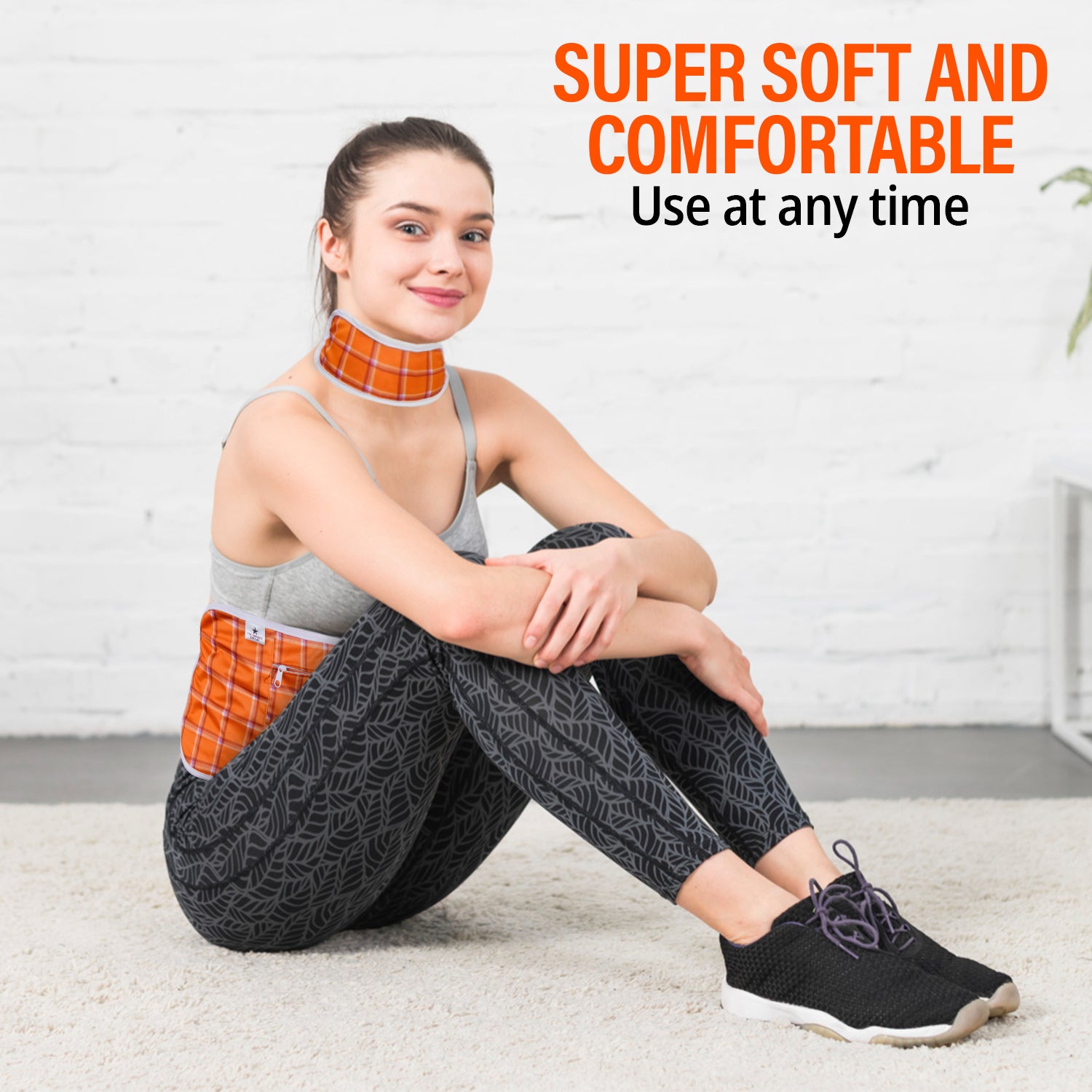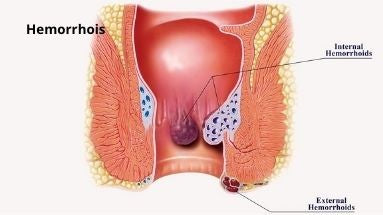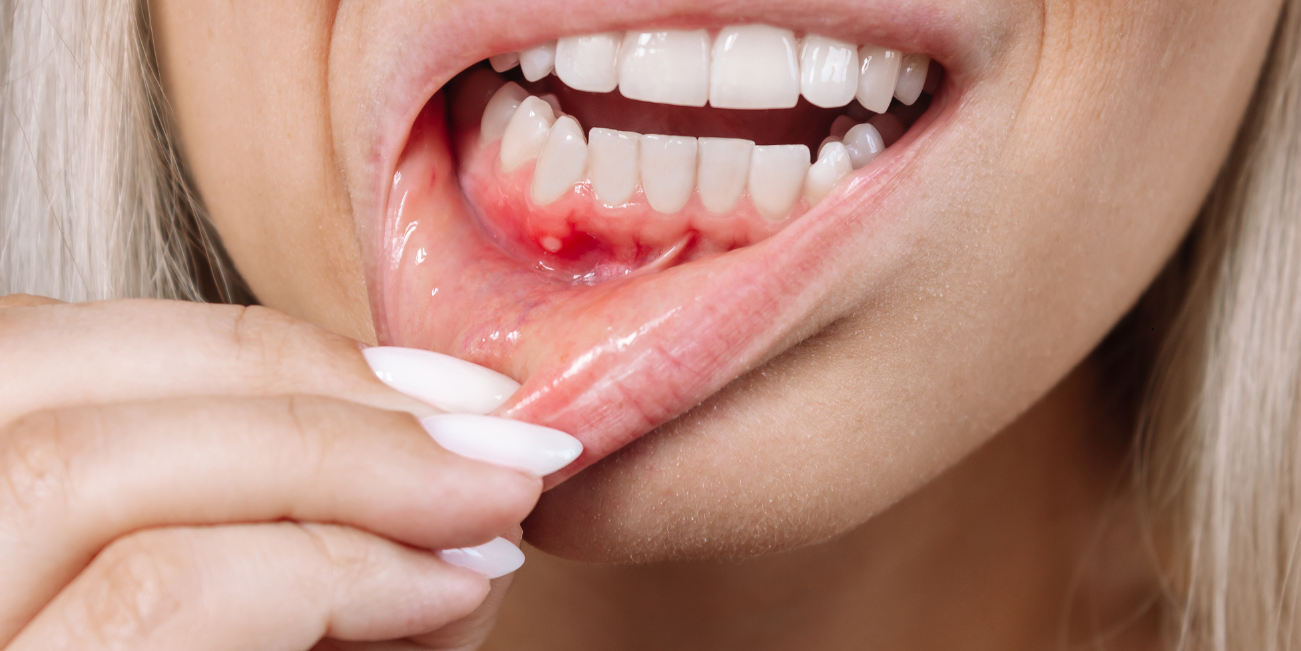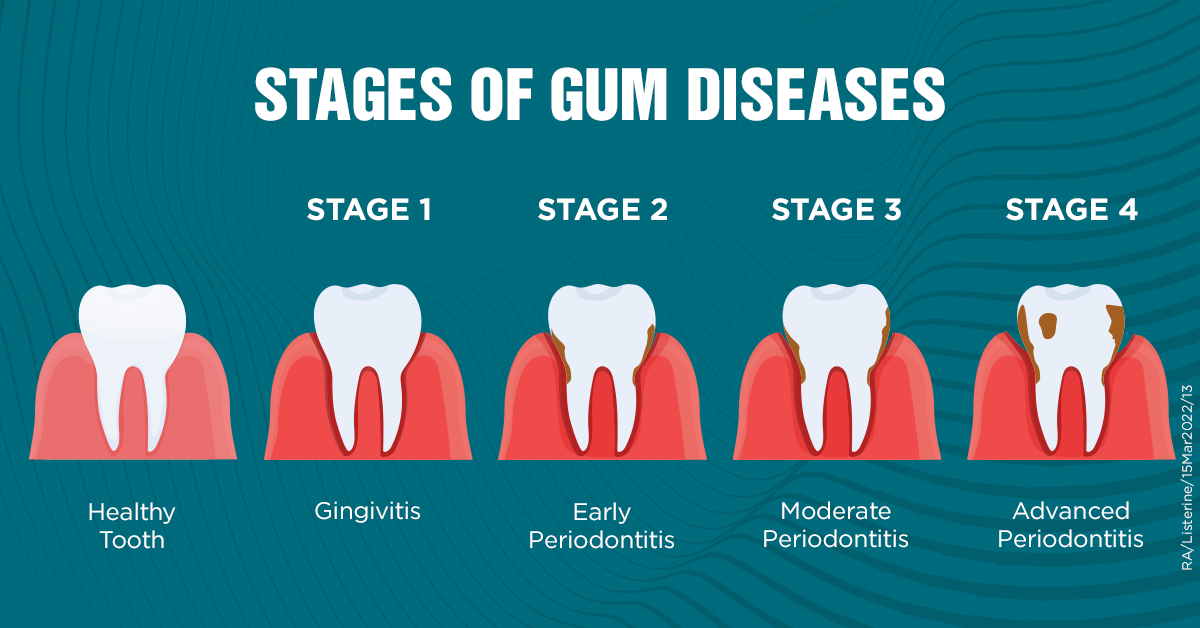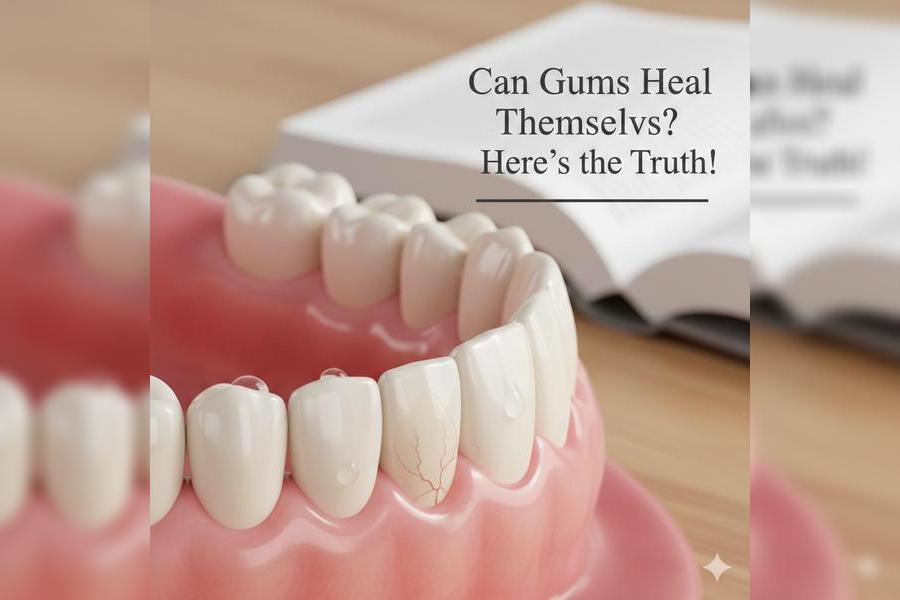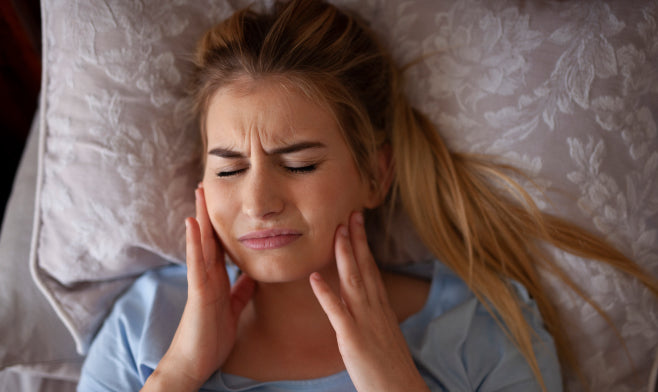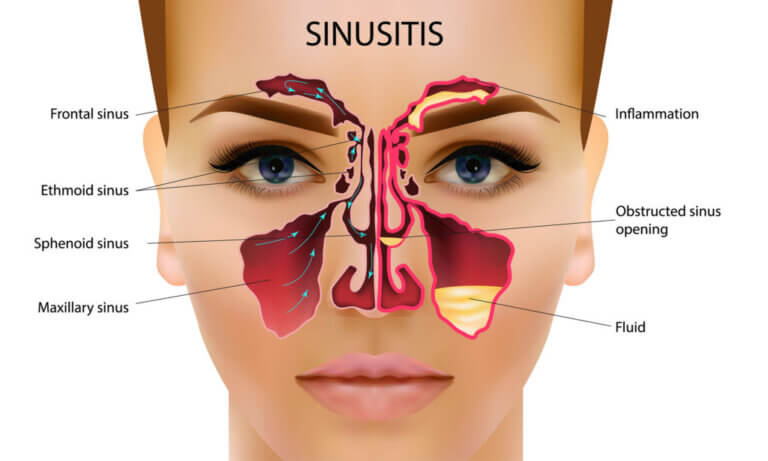What Is A Haemorrhoid?
Swollen veins located around the anus or in the lower rectum are called haemorrhoids or piles. The haemorrhoids can either be internal or external depending upon the occurrence and location. Half of the world\’s population of adult people suffer from the problem of haemorrhoids at the age of fifty plus minus five years. Internal haemorrhoids are the haemorroids inside the anus or rectum while external haemorrhoids are the haemorrhoids that develop outside the anus also called piles.

The most common and troublesome type of haemorrhoids is the external haemorrhoids that cause severe pain, irresistible itching, and uncomfortability of the person to sit. Severe cases may lead to bleeding from piles each time causing long term weakness and emaciation. The problem of haemorrhoids can be acute in few cases but in most cases, it is chronic. There can be a number of known and unknown risk factors like pregnancy, obesity, high blood pressure, and many more. The outcome of haemorrhoids maybe
- Severe bleeding: Severe bleeding can occur before and after bowel movement that leaves a psychological impact on the patient to avoid going to restroom.
- Effected area around anus: The area around anus can become tender, swollen covered with lumps and painful eruptions that create soreness.
- Skin reaction: The haemorrhoids are accompanied by severe itching, irritation and irresistible uneasiness causing continuous disturbance to patient.
- Advanced age adults: With the advancing age, the body becomes vulnerable to a number of infections and diseases. The sluggishness of natural energy of the body creates slowness of digestive procedures as well as decreased food intake and thus all the life and work pace becomes slowed down worsening the symptoms of haemorrhoids.
Causes Of Haemorrhoids:
There can be a number of reasons associated with the occurrence of haemorrhoids at any age of life. Yet, there are few more considerable causes of haemorrhoids. The real physiological reasn behind haemorrhoids may be the pressure created in the veins around anus. The possible causes of haemorrhoids may be:
- Straining: Straining during a bowel movement is the biggest cause of haemorrhoids so far. When passing stool the pressure is built up to clear the stomach but inspite of straining, the patient remains unable to pass the stool and is continuously in the restroom for hours.
- Chronic constipation: Insufficient digestion or incomplete absorption phases with minimum exercise creates immobility in the intestines further slowing down the excretion phase. This creates chronic cases of constipation wherein patient suffers from extra straining while sitting for bowel movement and creates pressure on veins around the rectum or anus causing haemorrhoids.
- Sitting for longer time, especially on toilet: An abnormal habit to sit for longer in restroom to use toilet to get rid of waste material of digestive procedures of body is a major cause of developing haemorrhoids in adults as well as in children.
- Hereditary issue: A family history of haemorrhoids may infect next generation to suffer from the effects of chronic constipation leading to haemorrhoids. It may pass on from parents to offsprings or in some cases to grand children too.
- Malnourishment: Poor eating habits may cause weak digestion and weakened metabolism of whole body creating imbalance leading to constipation. If constipation persists for long, it may give rise to haemorrhoids.
- Periodical hormonal imbalance: Menstrual cycle causes hormonal imbalance on monthly basis which may create abnormal digestive sequence. Some women suffer from constipation before periods and some suffer from diarrhea. If constipation persists for long it creates haemorrhoids.
- Long term stress: Long term stressful situation renders disturbed life pattern as sleep disorder, digestive disorder, periodical disorder etc. The digestive disorder plays a role to create chronic constipation and haemorrhoids..
- Sleep disorders: A disorder of sleep changes the eating habits and pattern too. Improper time table of food intake ultimately effects the digestion leading to haemorrhoidal condition.
- Birth Control Pills: An abnormal change in the physiology of the body occurs by using birth control pills. These pills always give unpredictable side effects to each person. If the immune system of body is weak towards digestive processes, then haemorrhoids are the outcome of its harmful effects..
- Consistent heavy lifting: For the heavy weight lifters or boxers, the gym personnels and competitors of the world wide heavy lifting games suffer from haemorrhoids due to changes on diet, changes in dietary patterns and large strain on nerves.
- Obesity: Obesity or being obese is another factor contributing to the development of haemorrhoids. The obesity is correlated to a number of ailments including constipation and straining leading to haemorrhoids.
- Pregnancy: During pregnancy, the uterus enlarges and creates pressure on the vein in the colon leading to constipation and heamorrhids.
- Extremely spicy food intake: The taste and quality of food has a biggest impact on the health system of your body especially digestion and absorption. Extremely spicy food with raw intake of chillies in the long run may impart development of haemorrhoids.
Symptoms Of Haemorrhoids:
Haemorrhoids can attack at an age of as early as ten years old and as late as fifty. The signs and symptoms remain same either for a child or for adults, the severe uneasiness is the first symptom that is quite visible to those in your surroundings. The most common signs and symptoms of haemorrhoids are:
- Extreme itching: An extreme itching around anus may occur which becomes intolerable slowly and is quite ever a sign of uneasiness and becomes a cause of severe concern for the patient. This itching almost never finishes up whatever you may try, as you may try to sooth it by applying powder or jelly or Vaseline or any other calming agent. But in the case of haemorrhoids, this itching never goes off.
- Irritation and pain around anus: The centre point of the disease, the anus becomes the effected area and may suffer from severe irritation and pain getting worse day by day.
- Swelling or lump around anus: The painful lump made around anus or a swelled area may render extreme irritation and itching. The area becomes sore and uncomfortable for sitting as well as moving.
- Fecal leakge: The fecal leakage of the routine debris from your body may be a big indication of haemorrhoids.
- Pianful bowel movements: The visit of washroom creating panic in your brain since each time you have to suffer from painful bowel movement creating discomfort, pain and bleeding, the signs of haemorhage.
- Blood spots: After cleaning if the tissue that touches your anus to wipe it dry becomes stained with spots of blood, then it is a clear indication of haemorrhoids.
Can Haemorrhoids Finish On Its Own
The haemorrhoids once gotten don’t go away themselves rather the patient suffers a lot to combat the negative effects of haemorrhoids and still it becomes impossible to get rid of them. Several types of treatment procedures and food items that are helpful to relieve haemorrhoids, over the counter drugs for haemorrhoids, DIYs as well as medical treatments are available to treat the symptoms of haemorrhoids and to reduce its severity. These treatment methodologies soothe the affected area and target the side effects of haemorrhoids.
Over-The-Counter Drugs Available For Haemorrhoids:
External haemorrhoids cause severe pain which can be relieved by soaking yourself in a tub of warm water for at least ten minutes every day. You can try to sit on a warm water bottle to relieve the pain of external haemorrhoids. Over the counter drugs or medications are available for the treatment of unbearable pain as medicated suppositories, ointments or certain creams to relieve the symptoms of burning and itching.
Over-The-Counter Fibre Supplements For Haemorrhoids:
Haemorrhoids cause severe pain and uneasiness so over the counter drugs and ointments are available but only drugs sometimes feel insufficient to help the healing. So supplements made of fibre are also available over the counter to help soften the stool so that the pain and strain lessens while passing the stool. Two of the most common types of these supplements are methylcellulose and psyllium that are fibrous and provide a great relief.
DIY Treatment Strategies And Essential Oils For Haemorrhoids:
Other than common over-the-counter creams and ointments, some people prefer to use herbal and essential oils to give soothing relief to symptoms of haemorrhoids. Myrtle essential oil is used for its antihaemorrhoidal properties.
Cinnamon, horse chestnut and some other essential oils and products used for natural treatment of haemorrhoids are as follows:
- Frankincense: The most popular home remedy to treat the pain and inflammation of haemorrhoids is the Frankincense that is an ancient Eastern traditional medicine. The traditional medicine kills certain types of bacteria that would create infection in the already sore and inflamed area and acts as a pain killer. The oil creates soothing feeling too by combating the effect of inflammation. The Frankincense oil is diluted with the help of a carrier oil as jojoba oil or coconut oil to be applied to haemorrhoids. Although the oil can be used as an aromatherapy too since all the essential oils possess anti-inflammatory effects when inhaled.
- Myrtle essential oil: Myrtle plant is the source of Myrtle essential oil that is the most commonly used essential oil to treat pain and bleeding caused by haemorrhiods. The oil was found more effective in a number of patients whose response was extremely poor to the anti-haemorrhoid medications and fibre supplements. The Myrtle essential oil is mixed with an ounce of cold cream and diluted before application over the affected area. Undiluted essential oils often cause skin irritation and allergic reactions.
- Horse chestnut essential oil: An effective essential oil for haemorrhoids is found to be the horsechestnut essential oil. The horse chestnut oil is a product of horse chestnut seed extraction that is used to improve the condition of pain and reduce swelling to a large extent when used as an anti-haemorrhoid medication for varicose veins and haemorrhoids. The essential oil already mixed with cream is available in the market for external haemorrhoids and can be used for frequent varicose veins or haemorrhoids. A few limitations regarding the use of horse chestnut oil are the allergic reactions associated with its use. The horse chestnut oil is reported to show blood clotting in few people and should not be used before any surgery. It may create sensitivity and such negative responses in people who have allergies to latex.
- Cinnamon bark essential oil: The famous essential oil used for anti-inflammatory characteristic is the cinnamon bark essential oil. It stimulates the healthy tissue growth and relieves inflammation from the inflamed tissues. A careful application of cinnamon essential oil is recommended for external haemorrhoids. The application of oil is made by diluting three to five drops of cinnamon essential oil in one onze of emlted coconut oil or sweet almond oil to achieve anti-inflammatory response. Although the use of cinnamon bark essential oil is strictly prohibited topically for people with sensitive skin.
- Clove essential oil: A very pure essential oil for the soothing and relief of haemorrhoids is the clove essential oil. It can be used in pure form as well as in a mixture with a cream. The chronic anal fissures associated with long term haemorrhoids can be ameliorated to a certain extent by the application of clove oil cream which relieves the anal pressure in such condition. Clove oil cream is available over the counter and can be made on your own too by mixing the essential oil with an unscented three to five drops per ounce of oil-based lotion. The people with sensitive skin should take precautions to use clove oil since it may create irritation.
- Peppermint essential oil: The peppermint oil has proven to be one of the effective agents against irritable bowel syndrome symptoms so the use of peppermint oil has been suggested to deal with the symptoms of haemorrhoids too. The composition of peppermint oil that is the menthol has anti-inflammatory as well as soothing properties both of which help to relieve the pressure around anus to make the bowel movements less painful and more easy. All the essential oils must be diluted before use to avoid any skin allergies and reactions. More precaution is to be observed for people with sensitive skin since the peppermint oil may irritate the skin.
- Tea tree oil: The tea tree oil is a strong ant-bacterial that kills the bacteria and helps to reduce inflammation promoting the healing and soothing of the symptoms. The oil is very strong and potent to be applied directly on the skin especially the sore an dinflamed skina round anus. The tea tree oil can be prepared by mixing two or three essential oils worthy for treating haemorrhoids and then diluting them with jojoba oil or coconut oil. The oil must be applied in moderation to the affected area to avoid the irritation and allergic reaction.
- Dill essential oil: A potent essential oil with strong anti-inflammatory properties is the Dill essential oil that can be prepared by mixing with witch hazel, tea tree and cypress oil to make a very potent haemorrhoid fighting ointment. The essential oil can be diluted by mixing with a carrier oil like sweet almond or coconut to protect the skin from any allergic reaction or negative effects.
- Cypress essential oil: One of the famous home remedy to act as a strong antimicrobial and an astringent is the cypress essential oil that can improve blood flow and pain around external haemorrhoid. The cypress essential oil can be mixed with a carrier oil to avoid the burning and allergic effects of the raw cypress oil. People with sensitive skin should not use the cypress oil at all. The oil can be infused into the air for its antimicrobial effects.
Side Effects And Risk Factors Associated With Use Of Essential Oils During Haemorrhoids:
Essential oils are used as a home remedy or a DIY by most of the people suffering from the haemorrhoids but a great limiting factor associated with its use is the use of oils for external haemorrhoids only, not for internal haemorrhoids. The essential oils are a topical medication for external haemorrhoids. When the oils are used to treat the external haemorrhoids, the surrounding area is needed to be kept clean and dry after treatment. The skin surrounding the haemorrhoid must be kept clean and never be burnt off or disintegrated and if tried, it will increase your pain and will make you susceptible to an infection. The essential oils can only be used for internal haemorrhoids along with suppository treatments prescribed by the doctor.
All the essential oils must be diluted in a carrier oil before using on the skin to avoid any irritation, burning or itching or any type of allergic reaction. The carrier oils can be used for sweet almond oil, olive oil or any other topical oil in an amount of one ounce per three to five drops. The essential oils are a product of DIY so they are not under monitoring of FDA and that is why special care must be taken to choose your product and brand for your problem.
Essential oils never should be taken orally they must be applied topically since they are poisonous to take orally. Although the essential oils give a great relief from the symptoms of haemorrhoids, yet there may be some risks associated so proper medical care must be taken and must seek doctor’s advice if you observe any symptoms as:
- Lasting pain and swelling around anus for more than a week
- Growing lumps inside your anus
- Recurring and chronic constipation
- Bleeding from anus that may be continuous or severe
Comparison Of Suppositories With Topical Medication:
Internal haemorrhoids occur inside the rectum while external haemorrhoids occur outside the rectum in the anus or around the anus. Although internal haemorrhoids also cause pain and irritation but the external ones are more painful, irritating and create itching because the tissue lining the internal rectum has fewer nerve endings. A number of creams, pastes and ointments are applied on the external haemorrhoids for relief of these symptoms. But these ointments and pastes as well as the creams and essential oils are for external haemorrhoids.
For internal haemorrhoids the best medication is suppositories. The medicine is absorbed best by the rectal tissues and help to relieve the discomfort associated with the internal haemorrhoids. These suppositories can sometime soothe a great number of symptoms of the ecxternal haemorrhoids too. The creams, ointments and pastes are applied topically to give a relief whenever you feel pain and irritation due to external haemorrhoids but still they are not as efficient as suppositories. Suppositories can be used for three to four times per day to get relief but still care must be taken for use of these medications for overdose. It’s much better to insert suppository after the bowel movement for longer period of time. All the medication whether internally or externally must be used for a limited time to prevent possible complications.
Generally, a small amount of blood is normal with the haemorhoids, its still safe to use a suppository, if you observe a small spot of bright red blood on tissue paper. If stool color becomes black and amount of blood is huge then must seek doctor’s advice.
Do Haemorrhoids Lead To Cancer:
Blood from any area of the body do give a suspect of cancer or leading to cancer, however hamerrhoids do not lead to cancer. The primary indication for hamerrhoids is often considered as blood oozing from anus on the tissue paper, or in the toilet after bowel movement etc. still it may not be a confirmed indication of haemorrhoids rather may be due to several other cause. Prior to sticking to the belief that you got haemorrhoids, you must consult the physician or gastroenterologist who is an expert of the digestive system of the body. This confirmation may save you from unnecessary burden of fear and worry. The reason for rectal or animal bleeding may range from mild to severe in a number of ways as:
- Anal fissure: A physical ailment that is purely temporary and can be treated by just putting more attention. The anal fissure or cut may be the reason for bleeding that may appear due to passing of large and hard stool from anus applying great pressure on the narrow passage resulting in an anal fissure.
- Angiodysplasia: The digestive system is a vast place covering liver, stomach, intestines (small and large), rectum and anus. Any kind of eruption or status change in any part of digestive system can bring the outcome of bleeding which may be doubted with haemorrhoids. The swollen and fragile blood vessels in the gastrointestinal tract may create bleeding.
- Cancer: Gastrointestinal tract may have polyps which sometimes become cancerous, either malignant or benign. These polyps start bleeding due to cancerous tissues which may appear from rectal discharge creating a misconception of haemorrhoidal bleeding.
- Colitis: Colitis is the inflammation of colon, the last part of large intestine that may swell or bleed due to certain disease conditions. The reason behind may be attributed to the infection of colon or the inflammatory bowel disease. These alterations in the normal flora and normal conditions of the intestine may create bleeding from the anal area that may become the doubtful reason to estimate the presence of haemorrhoids.
- Diverticular disease: Diverticulate is the area in the walls of colon, the large intestine where any type of bacterial infection or viral attack may cause the development of small, benign pouches. These pouches are cancerous and contain tumor that may cause inflammation and bleeding. These pouches may ultimately develop into malignant condition.
- Esophageal issues: Esophagus is the first part of digestive system that has the veins and arteries moving down the esophagus up to the whole digestive tract, with the ultimate end to the anus. Varicose veins can form inside the esophagus due to development of certain infections that may cause bleeding from anus.
- Peptic ulcer: An ulcer of the stomach or duodenum that is caused by the increased acidic conditions inside the stomach and intestines may become severe with the passage of time. The ulcer can be caused by long term use of raw spices, by keeping yourself hungry for cause of dieting purposes, any kind of infection, due to long term use of anti-inflammatory medications, etc.presented in terms of bleeding with stools and chronic diarrhoea.
How Are Haemorrhoids Diagnosed:
History of patient, physical and medical are observed and examined by the doctor to diagnose nay symptoms present for haemorrhoids. The very common symptoms include itching, pain, rectal fullness, lumps, chronic constipation and bleeding. Medical history of patient focuses on the associated symptoms of the patient for a deep insight into the disease and its outcome as constipation, bowel movements, straining while going to toilet, other symptoms as tumors, inflammatory bowel diseases and gastrointestinal bleeding etc.
Physical examination is as mandatory as family medical history and associated symptoms. It is performed by inserting a finger in rectum to feel for the formation of abnormal lumps or masses. Internal haemorrhoids cannot be felt by the physical examination and it is totally deferred in case of swelling or intense pain.
Anal fissures or anal cracks in the skin around anus are depicted as an outcome of the constipation or diarrhea. The painful experience of physical examination creating spasm and swelling makes it an uncomfortable application.
Technical aspects of the examinations as anoscopy, sigmoidscopy, colonoscopy etc.are used for the physical examination of the symptoms in an elaborated way. An anoscopy is the office procedure in which a lighted tube is inserted in the anus to have a brief look inside the anus. If a doubt is created about the bleeding arising from the colon or any other part of the intestine then sigmoidoscopy or colonoscopy is preferred. These are invasive procedures that need a proper clinical setup and can be done only by the subject specialist, gastroenterologist or surgeon.
Blood tests may be prescribed by the physician depending upon the case. Haemoglobin level or red blood cell count may be done to check the level of blood inside the body in case of excessive bleeding. Blood thininh can be confirmed by performing INR( International normalized ratio) or PT(protime) if the patient has been taking warfarin. Although there are a number of newly developed anticoagulation medicines available to thin the blood whose activity cannot be measured or depicted by routine blood tests. So special precautionary measures must be adapted by the physician to deal with the bleeding symptoms of haemorrhoids.
How Long Does It Take For Haemorrhoids To Go Away:
The haemorrhoids develop from normal tissues of human body. They become a cause of concern only when they swell and bleed or become inflamed and infected. Approximately there remain fifty percent chances of haemorrhoids to reccur after nonsurgical treatment for them while this ratio of recurrence for haemorrhoids decreases to five percent after surgical removal of haemorrhoids. First preference should be given to maintain the diet, fibrous food intake, being hydrated, reduce the constipating food and teking healthy exercise classes to get rid of haemorrhoids so that no surgery is required. Haemorrhoids arew almost a life-long condition that should be maintained by taking proper measures to control its intensity and it cannot be cured as such.
Grading Of Haemorrhoids According To Its Severity And Anatomica Location:
Haemorrhoids exhibit the symptoms of bleeding, itching, irritability and uneasiness with lot of straining for bowel movements creating mental disturbance too. One can adapt a variety of treatment options as DIYs or herbal or nutritional or surgical way to combat the effects of the disease depending upon the severity and intensity as well as the location of haemorrhoids. The haemorrhoids may be internal or external and are graded by the degree of prolapse below the pectinate line into the anal canal.
- Grade 1 haemorrhoids: : The internal haemorrhoids that bulge into the canal do not prolapse or fall completely into it. These may bleed giving the symptoms of bleeding from haemorrhoids.
- Grade 2 haemorrhoids: The haemorrhoids protrude pass the anal verge with the straining for flatus passage or bowel movement, but it doesn’t stay there afterwards. It spontaneously return to its original position after the straining has been finished.
- Grade 3 haemorrhoids: The haemorrhoid may protrude across the anal verge without any straining or burden and requires the patient to push it manually.
Are Haemorrhoids Different During Pregnancy:
Pregnancy being a great blessing must be considered as a unique and a careful journey to be covered by expecting mother as well as the family surrounding her. Although people feel shy to talk about haemorrhoids generally but it is a fact of life for many individuals, especially during pregnancy. Swollen veins inside or outside of your anus are haemorrhoids. We call it in layman language as piles too which look like varicose veins inside or outside of your anus.Most of the time, the haemorrhoids gain frequency during third trimester of pregnancy and during afterbirth phase. The causes and reasons of haemorrhoids during pregnancy may be unique due to its time related occurrence whixh can be treated by life style changes, adaptation to changed physiology of body and certain DIY products and herbs.
Symptoms Of Haemorrhoids During Pregnancy:
Symptoms and signs of haemorrhoids during pregnancy may vary according to its origin, intensity and severity as these may be internal haemorrhoids or external haemorrhoids. Generally symptoms do appear from external haemorrhoids and internal ones may not present any haemorrhoidal condition. A thrombosed haemorrhoid is a blood clot that may appear in external haemorrhoid that is a hard, painful and inflamed lump. During bowel movement sometimes, the internal haemorrhoid may be pushed to exterior surface causing great discomfort and bleeding. General symptoms during pregnancy appear as bleeding, painful bowel movements, raised area of skin under your anus, itching, burning and swelling.
Real Causes Of Haemorrhoids During Pregnancy:
Pregnancy is a compilation of a number of physiological changes, behaviours, hormonal imbalance and a unique set of symtoms that may change an individual’s perspective towards life. Almost fifty percent of women develop haemorrhoids during pregnancy. The body of an expecting mom becomes more susceptible to constipation due to changes in life style, eating habits, physiological changes, change in needs and demands of body and baby to be born, as:
- Prolonged sitting: The pregnant mom may become habitual to sit for a long time to give some rest to the baby bump, swollen legs and fatigued body in order to grab energy for the next targets to be achieved in everyday routine life.
- Hormonal changes: The hormonal imbalance of estrogen and progesterone during pregnancy to make the body susceptible and healthy enough to sustain the new life inside for more than nine months along with providing each type of food and healthy life to the unborn.
- Intake of supplements: Certain mothers are diagnosed with decreased iron production in the body and decreased haemoglobin level due to poor dietary intake and are provided with iron and other supplements to compensate for the loss.
- Dehydrated: Most of the women suffer from morning sickness during pregnancy and vomit a lot by looking at or tasting the food. In such a situation, the expecting ladies become disinterested to take any food or drink to avoid the suffering of nausea or vomit or sometimes due to emaciation related to the nausea makes them unconscious. They become dehydrated due to loss of water and negligible compensation of that lost water and ultimately suffer from constipation. If the situation prolongs then they suffer from haemorrhoids.
- Increased blood volume: The weight of the baby added to the weight of the mother and blood of the baby added to the blood of the mother leads to increased blood volume that may lead to larger veins during pregnancy. That becomes the ultimate cause of prolonged constipation and haemorrhoids.
- Pressure on the veins near anus: A lot of pressure builds up in veins near anus that become swollen during pregnancy due to weight of the baby and grown uterus. The pressure creates straining and uneasy passage of stool that may become a reason of constipation and temporary haemorrhoids.
- Constipation in general: Sometimes the physiology of the mother changes for nothing to adapt the constipated state and develops haemorrhoids.
Do Haemorrhoids Go Away After Pregnancy:
Pregnancy changes the physiology of body a lot positively as well as negatively. The changes appearing during pregnancy may disappear completely after pregnancy or delivery automatically without any treatment. Sometimes palliative treatments are needed by the patient to combat the severity and intensity of the symptoms. The blood volume, hormone levels and the intra abdominal pressure decreases after delivery.
The haemorrhoids mostly develop in the third trimester, during childbirth and immediately after childbirth. Extended straining during childbirth at second stage of labor too causes to develop haemorrhoids after childbirth.
Treating Pregnancy Related Haemorrhoids:
Pregnancy related haemorrhoids should be treated either to cure them or to ameliorate the intensity of symptoms to give a relief from the outcome. Untreated haemorrhoids may worsen with time and may cause complications as increased pain, avoidance to pass stool due to fear of pain or bleeding sometimes with anemia.
Since we cannot estimate the real source of bleeding during pregnancy, so it is much better to consult your doctor when you notice blood spot in stool or by wiping it with tissue paper.
Home Remedies Or DIYs To Treat Pregnancy Related Haemorrhoids:
Pregnancy related haemorrhoids can be ameliorated or sometimes treated to cure or ameliorate the symptoms and pass the time lest they finish off themselves after pregnancy or after childbirth.
- Witch hazel: To treat the pregnancy related haemorrhoids, the patient must use pads or wipes that contain witch hazel. The witch hazel contain oingredients that sooth the symptoms of haemorrhoids.
- Gentle wipes: Always use the gentle flushable wipes during pregnancy when you use the toilet.
- Sitz bath: Always try to use a sitz bath or soak in clean warm water to for almost ten minutes few times a day.
- Epsom salt baths: Use Epsom salt baths to sooth the symptoms of pregnancy related haemorrhoids.
- Ice pack: Must hold an ice pack on the affected area at least twice a day to sooth the symptoms of haemorrhoids that occur during pregnancy.
- Move around frequently: You must avoid to sit for longer periods of time and must move around frequently to reduce the pressure on the anal area thus giving a relief to symptoms of haemorrhoids.
- Eating fibrous food: Must take a high fibre diet including vegetables, food and fruit that relieves the symptoms of constipation thus making the process of passage of stool easy, combating the severity of haemorrhoids.
- Keep yourself hydrated: You must keep yourself hydrated by drinking lot of water and taking high fibrous food.
- Avoid straining: You must avoid to strain a lot while passing stool during pregnancy to avoid the haemorrhoids.
- Kegel exercises: You must perform kegel exwercises to ease the process of passage of stool making easy time to avoid constipation and thus haemorrhoids.
- Lie on side: You must lie on side rather than straight to avoid the pressure on anus thus reducing the pain and uneasiness created by haemorrhoids.
Medical Treatment Of Pregnancy Related Haemorrhoids:
Pregnancy related haemorrhoids should be diagnosed properly through a medical practitioner to ensure that the symptoms are really of haemorrhoids. Then a better understanding of the treatment options will be available either to start the treatment at home or by allopathic drugs. Before taking any medication during pregnancy even for the skin, you must always consult your doctor to avoid any risk for your baby.
A safe laxative, stool softener or a suppository may be prescribed by your doctor to relieve the symptoms of pregnancy. Witch hazel is a homoepathic remedy to be used during pregnancy but all types of medications must be tried or taken after consulting your doctor. Some types of medications as oral tablets or suppositories are available for treating haemorrhoids but they are not safe to be used during pregnancy. Similarly certain over the counter topical treatments are available to help haemorrhoids or herbal products may be prescribed by doctors but they may not all be safe to be used during pregnancy. These topical treatment options include anti-inflammatory and pain relieving remedies.So it is highly recommended to consult the physician before taking any treatment.
A few options for medical treatment of pregnancy related haemorrhoids may include:
- Rubber band ligation A small rubber band may be placed around haemorrhoid, around its base so that the flow of blood is stopped towards the haemorrhoid. The flow of blood will stop and ultimately the haemorrhoid will fall off. It takes almost ten to twelve days to get the result of rubber band ligation. A scar tissue may be formed during this process that helps to prevent the recurrence opf haemorrhoid at the same place again.
- Sclerotherapy: During the process of sclerotherapy a chemical injection is injected directly into the haemorrhoid. The process causes shrinkage of haemorrhoid and and a scar tissue may be formed. Sometimes the haemorrhoid may reccur after this treatment.
- Haemorrhoidectomy: A surgical process to remove haemorrhoids is called haemorrhoidectomy. The process is an invasive process associated with several risks, as general anesthesia, risk of damage to the muscles of anus, more pain, and a much longer recovery of time. So the treatment is only recommended for severe haemorrhoids or prolapsing haemorrhoids or complicated haemorrhoids.
- Tapledhaemorrhidopexy: During the process of tapledhaemorrhidopexy, the haemorrhoidal tissue is placed back inside the anus and helps in place using surgical staples.
How To Prevent Pregnancy Related Haemorrhoids:
A number of life style changes can be adapted to avoid the occurrence of haemorrhoids during pregnancy to avoid the pain and sufferings that may appear as an outcome of severe constipation.
- Fibre rich food: A food rich in fibrous material must be taken to avoid the constipation during constipation.
- Keep hydrated: You must keep yourself hydrated to avoid the constipation during pregnancy. Drinking lot of water to keep you hydrated and cover the extra demand of water of the body to compensate for the dryness created inside the body due to pregnancy.
- Avoid straining: You must avoid the straining during the bowel movement during pregnancy to avoid constipation that may lead to haemorrhoids ultimately.
- Avoid sitting: Avoid sitting for long during pregnancy so that the anal area does not become swollen during pregnancy and it does not create strain on anal area.
- Do not hold or delay: Do not hold or delay the need to go to washroom and pass stool so that immediately the stool may pass out and it may not stay there for long.
- Perform exercise: Perform regular exercise during pregnancy to avoid constipation that if prolonged may cause haemorrhoids.
- Diet supplement: The dietary supplement should be scheduled according to the instructions and guidance of your doctor so that any unnecessary food or any food dangerous for baby health must be avoided. The diet should be according to the physiological need of the body to avoid constipation and thus haemorrhoids.
- Overuse of enemas: Overuse of anything is poison. Especially during pregnancy, the overuse of enemas or laxatives or stool softeners must be avoided to make yourself risk free from any side effect of these options.
- Obesity: Body weight should always be monitored during and before pregnancy too to avoid the risk of constipation which may ultimately lead to haemorrhoids if the constipation prolongs might lead to haemorrhoids.
- Age related constipation: If you are late forty s to conceive then special care must be taken to keep regular dietary intake and fluid intake to counter the effects of constipation since at late age, the pregnancy related physiological changes are quite different from the early age pregnancy related constipation. You must consult dietician and nutritionist too to follow strictly fibrous diet.

